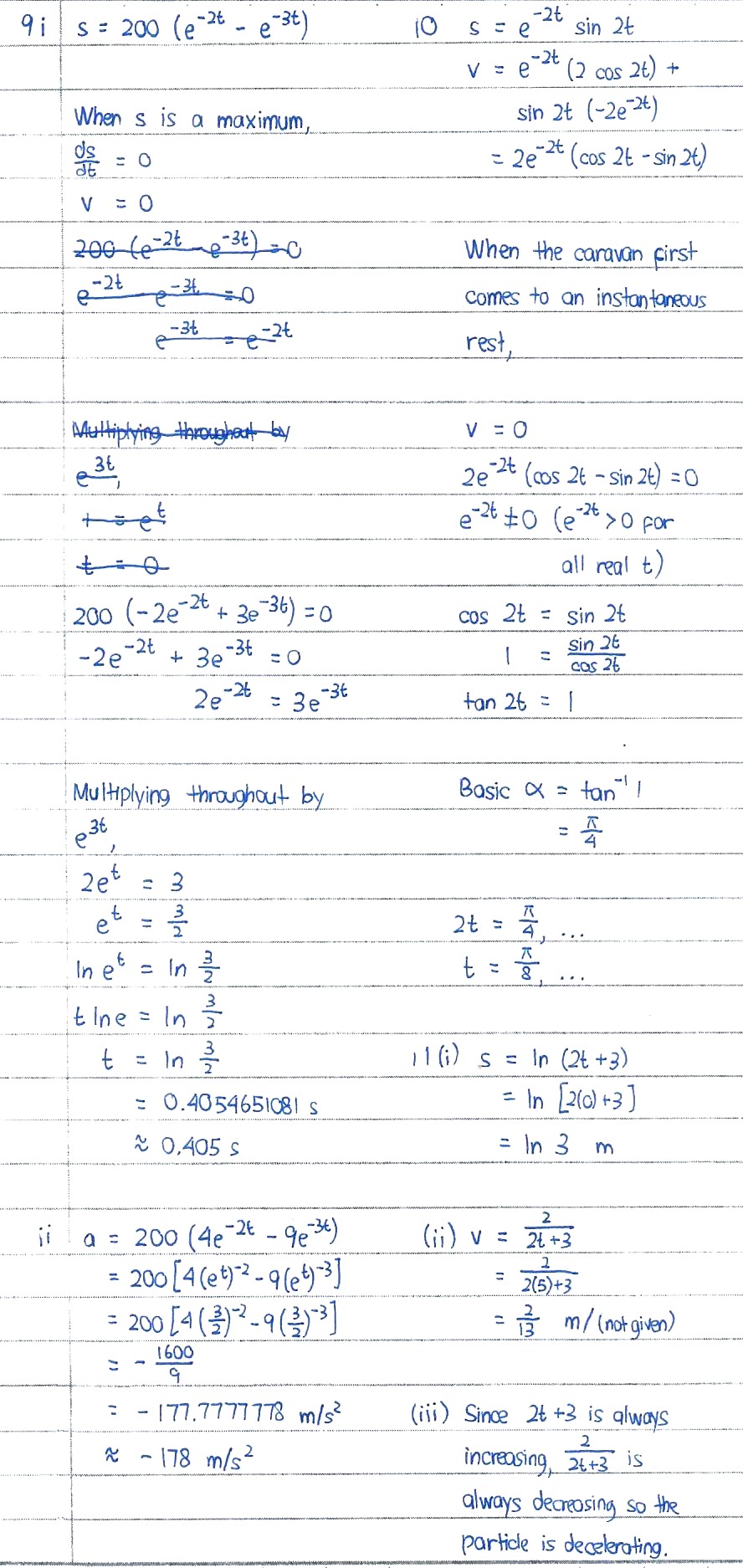Eric Nicholas K's answer to Kathy's Secondary 4 A Maths Singapore question.
done
{{ upvoteCount }} Upvotes
clear
{{ downvoteCount * -1 }} Downvotes
Q9, Q10, Q11
Q11 (iii) is the same as "show that the function is decreasing for all values of t". This particular example is straightforward so I bypass the usage of differentiation. The differentiation way is to show that the derivative of v i.e. the derivative of 2/(2t + 3), which equals -4/(2t + 3)^2, is always negative since (2t + 3)^2 > 9 > 0 for all t > 0.
End of session.
Q11 (iii) is the same as "show that the function is decreasing for all values of t". This particular example is straightforward so I bypass the usage of differentiation. The differentiation way is to show that the derivative of v i.e. the derivative of 2/(2t + 3), which equals -4/(2t + 3)^2, is always negative since (2t + 3)^2 > 9 > 0 for all t > 0.
End of session.
Date Posted:
4 years ago


